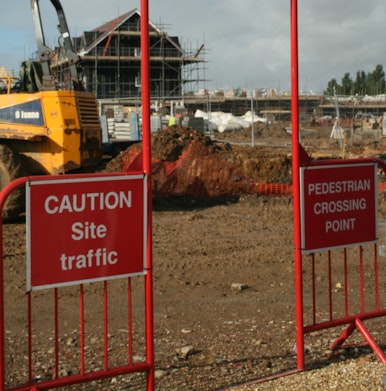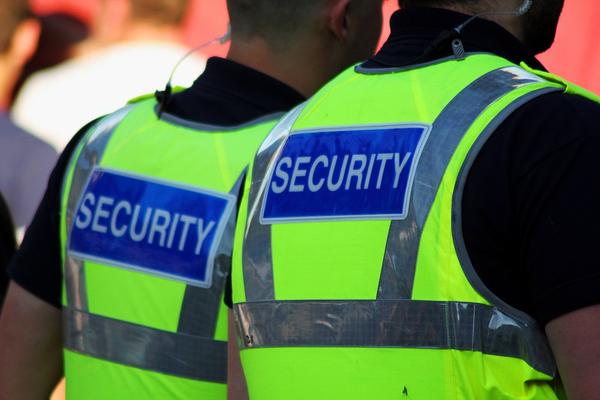Understanding the risks and the importance of vigilance with on-site security and safety
Construction is a vast and valuable industry which involves both the storage and on-going use of high value vehicles, materials, tools and machinery. The machinery, tools and fuel which can be stolen from vehicles has a resale value which makes them highly attractive to criminals. In darker months and on quiet and remote sites its incredibly important to protect your assets.
The reality of site theft costs the construction industry dearly. Research by Allianz Cornhill revealed that £800 million is lost in the construction industry through theft. Worse still, around the same amount is lost again through vandalism and fire. Vacant sites and properties are at particular risk of arson attacks. According to Aviva around 40% (approximately 100,000) of all construction site fires are started on purpose.
The risks that the industry is exposed to, can leave businesses and their workforces in vulnerable situations – unable to work or function when important tools or machinery or missing or the site in general is damaged.
The threat to construction businesses and operations
Unauthorised entry to a construction site can result in criminal activity, the subsequent threats to business are as follows:
- Operations – including ongoing works and schedules, disruption to which costs millions each year.
- Property and materials
- Buildings and outbuildings.
- Structures under construction or demolition.
- Construction materials such as metal or cabling.
- Tools, equipment and vehicles.
- Fuel – the high cost of fuel means that fuel theft is popular: it can easily be reused and disappear without trace, whilst the single action of stealing fuel from a construction site can have repercussions which threaten operations, property and life.
- Workers’ possessions and assets.
- Lost life or injury – ripping out fixtures and leaving wiring unsafe, as well as deliberate actions such as arson. Fuel spilled during theft is common and presents a real fire risk.
- Delays and subsequent operational – few plant vehicles or generators can function without fuel. Your teams can’t function without the appropriate tools. The delays caused will effective schedules and therefore costs.
- Property damage – expensive plant may be damaged in the process of the theft.
Loss and liability
As well as the threats to operations, property and life, the actions of thieves who’ve gained access through inadequately secured sites threatens site owners or managers with liability for further loss and damage. For example, if plant and heavy, powerful vehicles are stolen in order to gain access or destroy other buildings, such as ram-raiding retail premises, or to gain high up access to a building, this consequential action of the theft can be costly in terms of both site loss and liability for other damage / losses occurring off-site.
Similarly, construction companies can find themselves liable for accidents involving trespassers or as a consequence of trespassers compromising overall safety. This is often the case when sites are inadequately secured against trespass and vandalism. Construction sites can be particularly vulnerable to vandalism as part of general anti-social behaviour or specific, renegade rebellion against construction being carried out in the locality.
Construction site challenges
Construction sites present particular security challenges:
- Busy sites mean constant movement. With workers being focused on their own areas and tasks, the site may be vulnerable to opportunists who may just walk in unchallenged to help themselves, or enter the site to check out the layout, value of assets and presence (or not) of onsite security, in order to return later for a more organised theft spree.
- A variety of access points are often needed, for vehicles, construction site workers and for authorised visitors, such as managers and building control. Access points and arrangements may constantly change as work progresses and may be particularly vulnerable as phases of work move on.
- Movement and storage of vehicles which may need to be kept onsite temporarily can be a challenge to secure in a cost-effective and safe manner.
Security essentials – risk analysis
Every construction site is different, both in location, environmental factors and needs, but in order to achieve security, there are common factors for fundamental security:
- Thorough risk analysis is essential for the site and should reflect physical security, operational security and changes across each phase of work.
- Protocols should be put into place to reduce risks identified in the risk analysis.
- Limiting access, both to vehicles and visitors on foot, is essential in reducing opportunity for unauthorised access. Numbers should be limited and only authorised vehicles and persons present – no one, including site workers, should be able to access a site through an open entrance.
- Vehicle vulnerability should be addressed with action which includes key protocols so that plant which is temporarily not in use is not left unattended with keys in the ignition. All keys should be signed in and out and vehicles not in use should be locked in a separate parking area or garaged on-site. All plant should be fitted with immobilisation devices and tracking.
Physical security
You need to embed robust security which supports the infrastructure of the site. This means installing measures such as:
- CCTV, alarm systems and signage – including highly visible systems which offer remote monitoring and recording both as deterrent and quick alert to problems arising. Warning signage and out-of-hours security contact information are essentials.
- Access control – as well as minimal access points, this includes installing suitable, industrial security gating so that gates cannot be simply unhinged after hours.
- Lighting – as both a visible deterrent and aid to security, lighting can particularly protect access points and should be fitted to areas which are inaccessible and therefore cannot be disabled by intruders.
- Fencing and barriers – RISC recommends construction sites install site perimeter security of at least 2.4 metres high. Additional security can be gained by deploying:
-
- Barriers within the site to create separately secure areas.
- Anti-climb, palisade and / or welded mesh fencing as these reduce access through climbing and makes intruders visible.
- Kerbs and bollards if there is a risk of uninvited vehicle access across any part of the perimeter.
- Locks – sites should include lockable storage such as steel tool vaults and containment so that all equipment, tools, metals and materials can be secured out of sight overnight and when not in use, to reduce visible temptation to opportunists. Fuel stores should also be adequately protected, to prevent both theft and possible use as part of an arson attack. All access points should be lockable after hours, using tamper-resistant methods, for example robust padlocking rather than shackles which could be cut.
- Scaffolding – a resource often used by criminals to gain further access to property, all types of scaffolding, including scaffolding towers and ladders should be locked away when not in use.
Operational security
Incorporate a human overview element to your site security. Solutions may include guards or monitored CCTV. A person or team can then be responsible for the following:
- The provision and monitoring of risk management, assessment and health and safety protocols.
- Manned guarding – with guards who are suitably qualified and hold a current Security Industry Authority (SIA) licence. 24 hour guarding is probably essential for larger sites whilst smaller sites may find mobile patrols or dog security more appropriate.
- Entry and exit monitoring.
- Locking away and security marking of plant, tools and equipment.
- Managing and operating technology which supports security, such as setting alarms and automated systems (particularly important as the site develops and areas become additionally or differently vulnerable).
Finally, for any security put into place, it’s essential that site managers and workers share full involvement in the development of site security, are aware of systems and protocols and take responsibility for using these appropriately at all times.
This information is for general guidance only. For essential construction industry specific information, the UK’s Health and Safety Executive offers regularly updated information, including protocols and codes of practice.
If you are responsible for the management of a site and you have security concerns please get in touch. Our team can offer a variety of solutions including additional perimeter protection and surveillance to ensure that you schedules, staff and suppliers are kept safe. Contact our team for free quotes and expert advice about construction site security.

